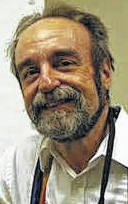
People often tell me they’re interested in stargazing but don’t want to spend much on expensive equipment. They can perhaps learn a lesson from the first astronomical telescope owner, Galileo Galilei.
In 1609, the telescope was a curiosity that a few eyeglass makers created by lining up two lenses from a pair of glasses. Galileo Galilei was the first to apply the new technology to observe the night sky systematically.
The telescope, which he fashioned himself, was crude by modern standards. Its diameter was only one inch, and its magnifying power was just 3x. Today, a $30 pair of opera glasses does better.
Years earlier, he had become a proponent of the oddball theory, first propounded by Copernicus in 1543, that the sun was at the solar system’s center.
He searched for evidence for the Copernican theory and found it almost immediately.
He discovered four tiny dots lined up around Jupiter. Subsequent observations revealed that the dots revolved around the planet.
Galileo realized that Jupiter’s satellites orbit the planet like our moon orbits Earth. Earth must be a planet like Jupiter. Our planet is no different from all the others wandering around the sky.
You can experience that wonderful moment of discovery by using the binoculars you probably have lying around the house anyway.
On a clear night, go out and find the planet Jupiter. Look high in the south just after dark, and you’ll run into a bright “star” that isn’t a star. That’s Jupiter.
Point your binoculars at Jupiter, and there they are — the four “Galilean” satellites. They are often lined up neatly in a row around the planet.
But don’t stop there. Galileo made other startling discoveries with a telescope markedly less potent than the instrument you hold in your hands.
Look at the moon. You can discover, as did Galileo, its craters and mountains.
Look at Venus in morning twilight. It’s the brightest object in the nighttime sky besides the moon.
Galileo discovered that it had phases like the moon. Right now, you’ll see a beautiful 67-percent-illuminated crescent Venus.
Scan the Milky Way. Galileo discovered that it was made up of innumerable stars.
There’s one discovery by Galileo that you should NOT try to replicate. He used his little telescope to look directly at the sun. He discovered sunspots but eventually went blind in the process.
His blindness illustrates the kind of man he was. He must surely have known what his solar observations were doing to his vision. He continued because he believed the only way to discover how nature works is through direct and careful observation.
His most significant contribution to humanity was developing that systematic experimental method. He called it “cimento,” “ordeal” in Italian. The name fits. Galileo suffered significantly on its behalf.
The powerful hierarchy of the Catholic Church had a vested interest in the old worldview. Privately, most of them believed that Copernicus and Galileo were correct and that the centuries-old belief that Earth was the center of the universe was false.
However, they wanted to delay public belief in the new ideas as long as possible.
They demanded that Galileo stop teaching the Copernican theory. But Galileo couldn’t keep his mouth or his pen in check.
At 69, he faced the Inquisition over his teaching.
They placed him under house arrest, where he spent the last eight years of his life. As one might expect, he spent the years productively. His experiments with gravity led inexorably to Newton’s laws of gravity, which changed the course of our understanding of the universe forever.
Over 400 years have passed since that fateful day Galileo first pointed his crude telescope at the heavens. A lot has happened since then. His teachings have triumphed, and the old Earth-centered worldview has scattered like dust.
And that’s how we think of Galileo today — the dedicated scientist who died blind and imprisoned for the sake of human knowledge.
Alternatively, Galileo was a victim of his own hubris and his inability to compromise with the Catholic Church, which, even though they condemned him, had his best interests at heart.
Perhaps the truth lies somewhere in between, a topic I will consider in a few weeks.
Tom Burns is the former director of the Perkins Observatory in Delaware.

